JFK: Lovelady’s “arrow” points to conspiracy and cover-up
By Ralph C. Cinque (with Jim Fetzer)
“No rational argument will have a rational effect on a man who does not want to adopt a rational attitude.”–Sir Karl Popper
The great British philosopher of science, Karl R. Popper, to whom my first book, Scientific Knowledge (1981) was in fact dedicated, championed the importance of falsification (or of attempts to show hypotheses and theories are false) as the key to understanding scientific knowledge. It was his position that the content of an hypothesis or theory is directly related to the extent to which they are amenable to being tested on the basis of observation, measurement and experiment–and that only evidence that results from unsuccessful attempts to falsify an hypothesis should count in its favor. Popper’s profound insight has application to research on JFK, where some students are unable to appreciate why the search for evidence that refutes the official account is more important than evidence that confirms it.
Popper drew (what he called) a criterion of demarcation between propositions that are scientific and those that are not. Claims such as “God created the universe and every living thing”, for example, or that “There is an all-pervasive Force that controls the outcome of events” are classic examples, since there are no observations, measurements or experiments that could possibly disprove them. They are consistent with the world’s history, no matter what its course. Likewise, the claim advanced by those who support Intelligent Design Theory on the ground that there are “irreducibly complex” organisms that appear to be inexplicable on the principles of evolution does not qualify as scientific unless it is accompanied by an explanation of how God created them, which in turn could be subjected to test.
That does not make these claims meaningless, as the logical positivists maintained, but it does make them unscientific. Popper’s position becomes especially important relative to hypotheses and theories about the laws of nature, because, unlike laws of society, they cannot be violated, cannot be changed and require no enforcement. An interesting example might be the claim that all pennies are copper. If we assume that the definition of “penny” is a coin having 1/100 the value of a dollar, which does not imply the metal of which it is made, then we can find millions of confirming instances, which would–at least, upon initial consideration–strongly support the hypothesis. But by subjecting it to a more thorough and painstaking study, that claim is falsified by the discovery that, in 1943, because of the shortage of copper for WWII, pennies instead were made of lead. The claim turns out to be false in spite of having an enormous number of confirming instances. The situation is similar with JFK.
The Assassination as a Theory
The use of the phrase, “conspiracy theory”, has been widely adopted as a form of denigration for any who question the “official account” of the death of JFK, the atrocities of 9/11 or a host of other events in which there are reasons to believe that the government itself may have been complicit. The term, “theory”, has stronger and weaker senses, perhaps most commonly as an interpretation of events that is based upon the available evidence. Detectives investigating crime scenes, which are well portrayed in programs such as “Law and Order”, form a theory of the case, entailing the consideration of those who may have committed it. Each suspect might be regarded as an alternative hypothesis that would explain the crime, were it to turn out to be true. When they discover a suspect has an alibi that makes it impossible for him to have committed it, that falsifies the hypothesis and attention turns to others.
It might be the case, of course, that an alibi is fictitious, just as photographs can be faked. In cases in which an alibi turns out to have been fabricated, instead of reducing interest in a suspect, that has the effect of increasing it. Why, after all, would anyone fake an alibi unless they had been complicit in the crime? On the other hand, those who might want to implicate someone in a crime they did not actually commit might undertake the fabrication of evidence incriminating them, which happened in the case of the assassination of JFK. We know that the Mannlicher-Carcano was planted, that his palm print on the weapon was faked, and that the backyard photographs were created by imposing his face on someone else’s body, as Jim Marrs and I explained in our study, “Framing the Patsy”. In this case, something like the opposite appears to have taken place, where features of Billy Lovelady’s face were imposed on Oswald’s body, a fascinating variation on the forms of fakery we have already encountered in this case.
The government would have us believe that this photo is authentic and unaltered. One argument has been is that it was published in some (rather obscure) newspapers already on 22 November 1963, which would drastically curtail the time that would have been available to alter it. But claims about “impossible timelines” have arisen before in relation to the Zapruder film, where we have many witness reports, official testimony, and Secret Service evidence that the film was massively revised to conceal a limo stop during which JFK was hit twice in the head. Most importantly, frame 374 shows a blow-out to the back of the head that was painted over in earlier frames. The authenticity hypothesis has been falsified. The original was taken to the National Photographic Information Center on Saturday, 23 November 1963, as an 8mm, already split film that was developed in Dallas, while its replacement, a 16mm unsplit film developed in Rochester, was brought there on Sunday, 24 November 1963. Since we knew independently that the film had been altered, we knew that their had to have been time to do it, since nothing actual can be impossible. Similar considerations obtain in the case of the Altgens6.
It’s the clothing, not the face!
The “official account” has it that the person in question was Billy Lovelady, who worked in the Texas School Book Depository along with Lee Oswald. Early research by Harold Weisberg, Whitewash II (1966), however, suggested that this was actually Lee Oswald, which, if it were true, would have given him an alibi, since he cannot have been at the doorway watching the motorcade pass by and at the same time have been on the 6th floor shooting at JFK! Even Oliver Stone, the director of “JFK”, thought it had been Billy Lovelady, which seemed to resolve the issue. More recently, however, the issue has been revived by new research inspired by Ralph Cinque, a chiropractor who is used to dealing with bodies and clothing. Ralph noticed that the distinctive shirt that the figure, “Doorman”, was wearing bore a striking resemblance to that Oswald was wearing when he was apprehended at The Texas Theater. But confirmation that their shirts bear strong resemblance is only one part of the evidence.
I was drawn to the study of this photograph by the release by the Assassinations Records Review Board (ARRB) of notes from the interrogation of Lee Oswald by Homicide Detective Will Fritz, during which Oswald told him he had been “out with Bill Shelley in front”. This has to have been during the shooting, since otherwise Fritz would not have asked the only “official suspect” in the assassination as to his whereabouts at the time. Taking a closer look, it was apparent that the face of a man to Doorman’s immediate left/front (right/front, viewing the photograph) had been obfuscated, which led me to conjecture that that must have been the face of Lee Oswald. After all, surely altering this photograph would not have been done unless someone had been there who should not have been, where the obvious candidate would have been the alleged assassin. I was shortly thereafter contacted by Ralph Cinque, who advised me that it was their clothing that was really the key rather than their faces.
And, indeed, not only does Doorman’s shirt closely resemble Oswald’s shirt–where Richard Hooke has found no less than 27 features that are the same from one to the other–but Billy Lovelady himself went to the FBI in Dallas on 29 February 1964 and showed them the shirt he had been wearing that day. It was a red-and-white, vertically striped short-sleeved shirt that looks nothing like the shirt that Doorman was wearing. The fall-back has been to claim that Billy was mistaken–but how could anyone make a mistake like this in relation to the assassination of the President of the United States?–and that he had actually been wearing a red-and-black checkered shirt, which was being worn by someone in film taken of the doorway area immediately after the assassination. But it is easy to see that that person does not look at all like Billy Lovelady and has a profile more like that of a gorilla, where yet a third “Lovelady” was introduced into other footage to overcome the obvious objection that his checkered shirt was buttoned.
Not only did Billy go to the FBI had show them the shirt he was wearing, but the FBI reported it back to J. Edgar Hoover, who had asked them for proof that the man in the doorway was Lovelady. Since the shirt he had displayed falsified that hypothesis, they attempted to avoid Edgar’s wrath and potential banishment to Siberia by asserting both that Billy had been wearing “a red-and-white vertically striped shirt and blue jeans” and implying that this confirmed his identity as Doorman, when it actually refuted it. But that was the best they could do. Billy would also confirm that this was the shirt he had been wearing to Jones Harris, whom I recently interviewed on “The Real Deal”. So we not only have confirmation that Oswald was Doorman but evidence that falsifies the alternative hypothesis that Doorman was Billy Lovelady instead. Rational minds, I believe, would find this evidence compelling–and even decisive.
Additional Considerations
But we have more. Billy himself told Dom Bonafede of The New York Herald-Tribune that he was about 3″ shorter than Oswald and weighed 15-20 lbs. more. He said, “It was me in the doorway”, which appears to be true–except that he was not Doorman but was standing beside him. Consider what Bonafede wrote and consider the hypothesis that he was standing to Doorman’s left, with his arms upraised to protect his eyes from the Sun to watch the motorcade. Notice that that man not only seems to be wearing a short-sleeved shirt but appears about 3″ shorter and 15-20 lbs. heavier than Doorman:
Mr. Lovelady said the F.B.I. had taken pictures of him from various angles and that he had been shown a three-by-four foot blowup of the doorway picture and asked if he was in it. ‘I immediately pointed to myself in the doorway,’ Mr. Lovelady said. He said he was about 15 to 20 pounds heavier than Oswald and about three inches shorter. Asked whether there was any resemblance to Oswald, he replied, ‘I’m fatter in the face.”’It was me in the doorway,’ he said. ‘If anyone doesn’t believe it, they will just have to take my word.’ (5-24-64 article by Dom Bonafede in The New York Herald-Tribune)
The argument has also been made that Doorman has facial features that resemble those of Lovelady, which is also true; but he also has features that resemble those of Oswald. Richard Hooke has done a study that suggests how the image was rearranged to create the impression that Billy was Doorman, which also appears to have been advanced by “Oswaldifying” the appearance of Lovelady in the third (or left-most) of the three FBI photographs, just as Oswald appears to have been “Loveladyfied” in the Altgens6. What we are unraveling is the performance of artistic photo fakery by the most sophisticated intelligence agency in the world, which was also responsible for recreating the Zapruder home movie:
Another interesting report comes from Bill Shelley, whom Oswald had cited as part of his alibi. Our best guess is that Shelley was involved in framing Oswald and that it was his face that was obfuscated, no doubt because, had he actually been there, it lent credibility to Lee’s statement to Fritz that he had been “out with Billy Shelley in front”. What is interesting about Shelley’s testimony to the Warren Commission is that he not only claims to have not seen Oswald–contradicting Lee’s alibi–but also says that he was in the vicinity of Billy Lovelady, who “was seated on the entrance steps just in front of me”. We not only believe his denial of seeing Lee was false but that, if his observations of Lovelady were true, then Lovelady could not had been Doorman, who was standing as he extended his head:
“[A]s the Presidential motorcade passed I was standing just outside the glass doors of the entrance. At the time President Kennedy was shot, I was standing at this same place. Billy N. Lovelady who works under my supervision at the Texas School Book Depository, was seated on the entrance steps just in front of me. I recall that Wesley Frazier, Mrs. Sarah Stanton, and Mrs, Carolyn Arnold, all employees of the Texas School Book Depository, were also standing in this entrance way near me at the time Pres. Kennedy was shot. I did not see Lee Harvey Oswald at the time Pres. Kennedy was shot.” (4-7-64 testimony before the Warren Commission, 6H327-334)
Shelley made other observations that are important in relation to attempts to deflect the significance of Oswald’s statement to Fritz that he was “out with Bill Shelley in front”, especially by maintaining that he was reporting about having seen Shelley AFTER THE SHOOTING. But we know that Lee was confronted in the lunch room within 90 seconds of the shooting by Officer Marrion Baker and that, by his own account, Shelley and Lovelady took off toward the railroad yard “immediately following the shooting” and “returned through the west side door of the building about ten minutes later”. While we believe that Shelley was complicit in framing Oswald, his testimony to the Warren Commission falsifies the allegation that Lee was talking about seeing him AFTER THE SHOOTING rather than DURING:
“Immediately following the shooting, Billy N. Lovelady and I accompanied some uniformed police officers to the railroad yards just west of the building and returned through the west side door of the building about ten minutes later. I remained in the building until about 1:30 PM when I was asked to go to the Dallas Police Dept. to furnish an affidavit. I returned to the Texas School Book Depository about 5 PM. I did not leave the building until about 7 PM that day.” (4-7-64 testimony before the Warren Commission, 6H327-334)
Even the defense that the Altgens6 was published already on Friday, 22 November 1963, cannot be sustained. While copy after copy of “EXTRAS” of obscure newspapers that allegedly published the Altgens6 have been produced, that is not the case for any of the major newspapers, such as The New York Times, The Washington Post or The Chicago Tribune. If it had been available, it most certainly would have appeared there. We know that Roy Schaeffer, working for a newspaper in Dayton, OH, took it off the photo-fax the following morning and, because of his background in photography, had noticed it had been altered in the doorway area. And Ralph has now exposed the CIA’s charade by discovering both original (without) and faked (with) versions of the “EXTRA” for the Beacon Hill News-Paladiumn for 22 November 1963, which is a small town with a population of around 10,000.
Rational arguments have confirmed that Oswald was Doorman and have falsified the contentions that Billy Lovelady or the Checkered Shirt Man could have played that role. And the government took extraordinary steps to conceal the revelation, because even Lee Oswald could not be in two places at the same time. The most recent research by Larry Rivera, who is also a member of the Oswald Innocence Campaign, has revealed that the man who drove Lee to work that day and subsequently identified Lovelady as Doorman for the Warren Commission, Buell Wesley Frazier, had his image removed from the Altgens6 in order for him to claim he had been”back in this more or less black area here”, where Billy was standing with his upraised arms. If they were moving Lovelady to be Doorman, they needed someone–by insinuation–to be the man with his arms raised, for whom they used Buell Wesley Frazier, who did his best to confirm Billy as Doorman but, as Ralph Cinque explains, was unsuccessful in his effort, one more proof that Oswald was Doorman and could not possibly have been on the 6th floor shooting at JFK.
Lovelady’s “arrow” points to a JFK government conspiracy
By Ralph Cinque
There is a new and important discovery about Warren Commission Exhibit 369 which is the arrow that Billy Lovelady drew to point to himself.
Obviously, I am not talking about the arrow you can see below. That arrow was drawn by someone else: Buell Wesley Frazier.
The arrow that I am referring to is a different one, and it is invisible without magnification. And it does not point to Doorway Man, but rather to the figure next to him who has become known as Black Hole Man.
First a little history
The Warren Commission asked two individuals to locate and identify Billy Lovelady in the Altgens photo, and they were Billy Lovelady and Buell Frazier. Both were asked to draw an arrow to Billy Lovelady. But, for some reason, on different occasions, they gave them each the exact same copy of the Altgens photo to draw on, which is known as CE 369.
To avoid bias, wouldn’t they provide each a fresh, unmarked copy of the Altgens photo to draw on? You would think so, but that’s not what they did.
Buell Frazier went first, and he drew the arrow in the white pointing to Doorway Man which we all have been looking at for 50 years.
People commonly talk about that exhibit as if it was the handiwork of Billy Lovelady, but the arrow we see was definitely drawn by Buell Frazier. No one disputes that. You just have to read the testimony. Attorney Joseph Ball acknowledged the presence of an arrow “in the white” and asked Lovelady to draw another arrow “in the black” using a black pen.
Why would someone ask someone to draw an arrow in the black with a black pen? Isn’t that like painting a picture of a black cat in a coal mine at midnight?
Regardless, that is what Ball asked Lovelady to do, and the presumption has been that Lovelady did it, although we can’t see it. But, that presumption was wrong….
Searching for the arrow
I have repeatedly examined the black space above and to the right of Doorman’s head looking for a hint of Lovelady’s arrow but never could find it. But then it occurred to me: What if Billy drew his arrow elsewhere in the photograph away from Doorman?
So, I decided to look around Black Hole Man since he is the figure whom we assume to be Lovelady, which was first suggested by Richard Hooke. And lo and behold….
Do you see that black line extending over Black Hole Man’s forearm? It’s about the middle, on the inside, but closer to his wrist than his elbow. Doesn’t that look like it could be the tail of an arrow? Look at it in comparison to the unmarked Altgens:
As you can see, in the unmarked Altgens photo on the left, the forearm is unmarked, while in CE 369 on the right, the forearm is distinctly marked. What could cause that line? Certainly not a shadow. From what? There is no object that could cast such a shadow. There is nothing else it could be except the tail of Lovelady’s arrow.
The Warren Commission Testimony
Now consider the testimony. WC Attorney Joseph Bell took out CE 369 with Frazier’s arrow in the white already in place and pointing to Doorman:
Mr. BALL – I have got a picture here, Commission Exhibit 369. Are you on that picture?
Mr. LOVELADY – Yes, sir.
Mr. BALL – Take a pen or pencil and mark an arrow where you are.
Mr. LOVELADY – Where I thought the shots are?
Mr. BALL – No; you in the picture.
Mr. LOVELADY – Oh, here (indicating).
Mr. BALL – Draw an arrow down to that; do it in the dark. You got an arrow in the dark and one
in the white pointing toward you. Where were you when the picture was taken?
Mr. LOVELADY – Right there at the entrance of the building standing on the top step, would be
here (indicating).
Mr. BALL – You were standing on which step?
Mr. LOVELADY – It would be your top level.
What is Ball talking about? We know now that the arrow Lovelady drew pointed to a different figure than to what Frazier pointed to. So how could Ball say, “You got an arrow in the dark and one in the white pointing toward you” when the “you” was a different figure?
An arrow in the dark
Are you wondering if there was also an arrow in the dark above Doorman that might have been the one that Lovelady drew? Well, let’s start by considering where exactly it would have been drawn.
Say that you are the artist. You are shown that photo with Frazier’s arrow in place, and you are asked to draw another arrow, and it is your intention to also point it to Doorman. Where would you draw it?
I can tell you where at least 95% of people would draw it. They would draw it at the same angle that Frazier did, but coming down from the other side. Like this:
I took the liberty of drawing it in grey instead of black just to make it easy. But, you get the idea. That’s where most people would draw it. Where else? You’re not going to crowd it over next to Frazier’s? Why do that? And, you are not going to draw it horizontally from right to left. It’s not even comfortable to do that. Try it yourself. It strains the wrist, whether you are right-handed or left-handed. You are going to draw it diagonally down from right to left, just as I did.
Alright, so now you know where Lovelady would have drawn his arrow if he wanted to point it to Doorman. So now look in that area and see if you see the slightest hint of an arrow.
Get a magnifying glass
Get a magnifying glass. And periodically glance at the tip of Frazier’s arrow to remind yourself what you are looking for.
But, there is NO ARROW there. There isn’t the slightest hint of an arrow there.
Now, the absence of an arrow there does, in fact, increase the probability that the element we are seeing on Black Hole Man is Lovelady’s arrow. Realize that logical deduction does include “process of elimination” as a valid method.
If you know that a pretty woman is waiting for you in 1 of 10 rooms, and you check 9 of them and do not find her, then you can be certain that when you open that 10th door that she is going to be there.
You can’t be wrong about that
You can’t be wrong about that mathematically. The only way she couldn’t be there is if you were misinformed. But, is that an issue here? Does anybody doubt the testimony? Are there any grounds to think that the account of Joseph Ball telling Lovelady to draw an arrow in the black where there already was one in the white did not happen?
I don’t think we have any grounds to go there. It’s very straight-forward. And, I don’t think my adversaries want to question the truthfulness of Joseph Ball and the accuracy of the Warren Report. So, they have no grounds to go there either.
Therefore, the absence of Lovelady’s arrow elsewhere makes what we see on Black Hole Man’s forearm the winner by “process of elimination” or you could say, default.
Now consider that the angle of the short line on BH Man’s forearm is coming in at the same angle as the arrow that Frazier drew. Think of it like a plane landing. Those two planes are coming in at the same angle.
Matching Frazier’s angle is something that Lovelady probably did subconsciously. He didn’t think about it, but he took his cue from Frazier. It is natural to do that. In fact, even without Frazier’s example, the most natural way to draw an arrow is diagonally, just as Frazier did without any help.
The arrow’s head
Now it’s time to look inside the black space in search of Lovelady’s arrow head.
Admittedly, this is the hardest part. We are looking for two diagonal arms, one upper and one lower. It seems to me that the upper one may be piercing the white area ever so slightly.
Moreover, it looks like someone may have traced along the inside margin of his forearm with a felt pen. Do you notice that it is distinctly darker black below the curve of his wrist and his right hand? Compare it to the arms of the arrow that Frazier drew. You get that same impression of a darker, shinier black. Now compare it to the black along the margin on the inside of Doorman’s t-shirt. There, you don’t see what I’m talking about; there is no darker, shiner black. It’s just a dull black.
Also, I notice that BH Man’s forearm suddenly narrows. I realize that it’s normal for a man’s forearm to be thick towards the elbow and narrow towards the wrist, but it does seem like there is a sudden break there. I am very open to the possibility that they did some doctoring with a felt pen in the black space to hide the head of Lovelady’s arrow.
The tiny blip
Look at one more thing: What is that little blip there circled in red?
Is that from the irregularity of the felt pen as they swung it around that curve? If not, what is it? It can’t be a shadow. What would have cast it?
But regardless, even if that last bit turned out to be innocent, we are definitely looking at the arrow that Lovelady drew. It has to be it. Process of elimination alone makes it a certainty. And think about what it means. It means that at the time, Lovelady was being honest. Lovelady was being noble. Lovelady was trying to tell the truth. Eventually, he got with the program and started claiming to be Doorman. But on that particular day, which was April 7, 1964, he did not want to lie.
But, he eventually changed his mind and started lying. Why? Only two possibilities come to mind: threats and/or bribes. They could have threatened him, and they could have threatened his family. And regarding bribes, Lovelady went from being a lowly warehouse worker to being the owner of his own trucking company in Denver. Imagine that. Was that because the American Dream was alive and well in those days?
Lovelady’s shirt
But, think about the implications: Lovelady was telling us that he was Black Hole who is not wearing a plaid shirt. He is not even wearing a long-sleeved shirt. That means that ALL of the images of Lovelady purportedly wearing a plaid shirt on 22 November 1963, including the famous Martin frames and the various frames from the Dallas PD footage, with the famous walk of Lovelady past Oswald, are all false. None of those figures were Lovelady. Every single one of them was faked. And remember that Lovelady told the FBI that he wore a short-sleeved striped shirt on 22 November 1963–and they even archived it in writing to the Warren Commission.
I realize there are no stripes on the shirt of Black Hole Man, but notice that he is also lacking a head, which is why we call him Black Hole Man. They blackened out his face, and they whitened out his shirt.
Lovelady’s long-lost arrow has been found. The 50-year-old presumption that it was buried in the blackness and pointing to Doorman–if only we could see it–has turned out to be false. And this changes everything.
Ralph Cinque, a chiropractor, health spa operator, and entrenpreneur, has published a series of articles on JFK at lewrockwell.com. His video series, “Visible Proof That Oswald Was Innocent”, is archived on YouTube.
James H. Fetzer, a former Marine Corps officer, is McKnight Professor Emeritus at the University of Minnesota Duluth and a columnist for Veterans Today.
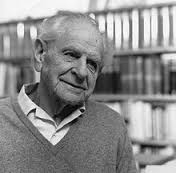
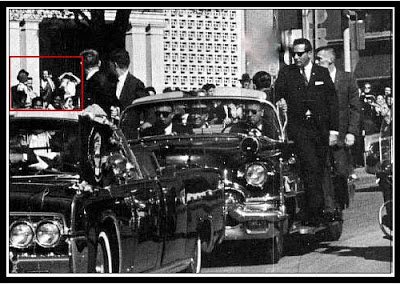
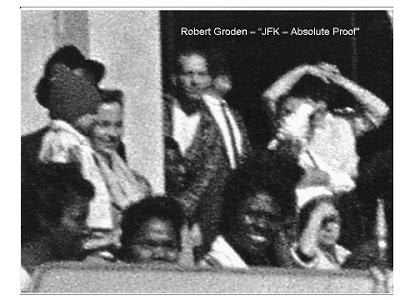
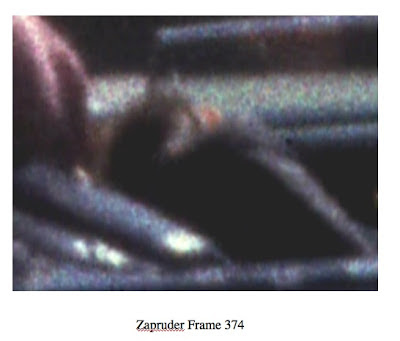
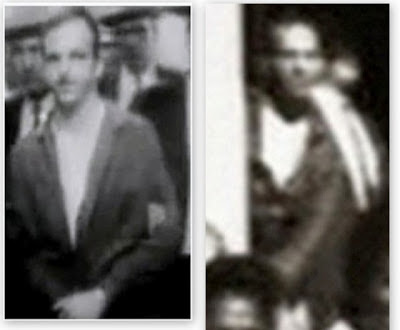
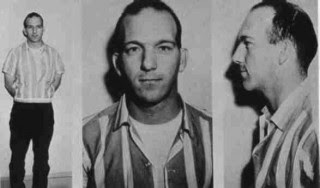
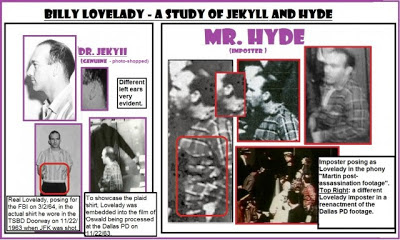
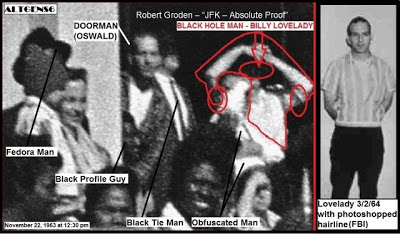
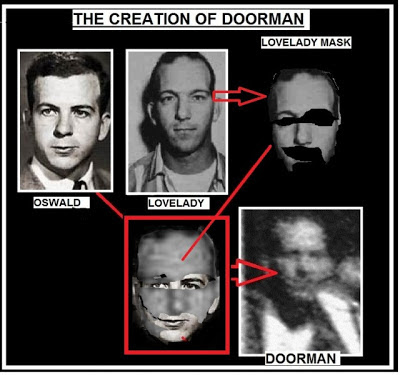
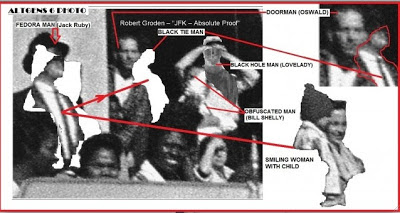
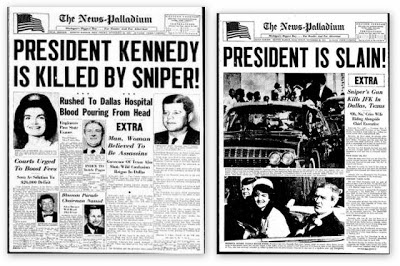

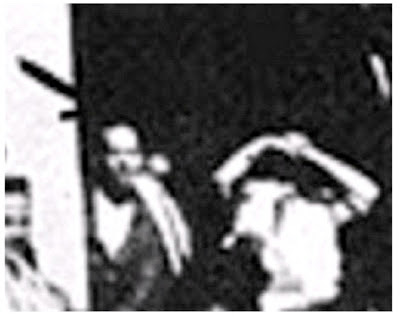

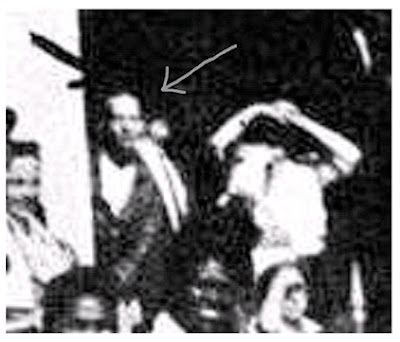



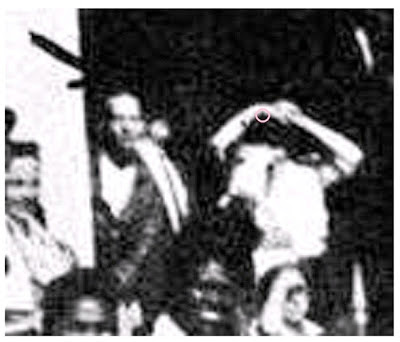
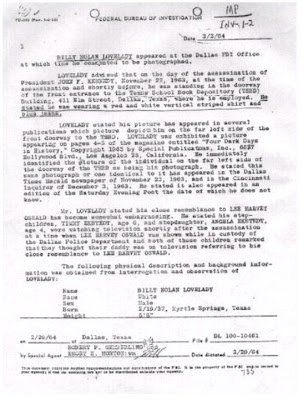

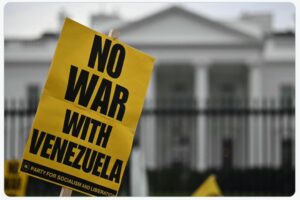

Everyone has own interpretation of _!
(utube -wc-Hsca- info on the internet)
Buell W Frazier said Rumors people say saw lee & I at the Donut shop & The Rifle range is totally false.11-22-1963 RANDLE. 2438 Westfield, Irving, Tex.Michael – Ruth Paine 2515 West Fifth Street, Irving.Linnie Mae Randal – watched LHO walk across .L shape street -that connect paines to Randals.
It wasnt no more than a block long to the most.LHO walk to Randals put his pkg in Frazier car.Linnie Mae Randal watch events happend b4 her eyes.
She didn't mention it at the kitchen table that morning.
Linnie Mae Mom was sit there at the kitchen table.Buell Frazier said his mother ask who is that person .
Buell Frazier said that is Lee i work with in Dallas.Then when Frazier got done with his breakfask.what is interesting to note about his ride story.LHO was standing Buell got in car and lee got in too.They rode the Dalllas -Buell ask about his kids.Buell said said listen to the radio as they went dallas.
Buell said he used radio to tell about road conditions.Buell Said it was misty he was use the wipers .When finally got to dallas , they both got out of car.
Buell said Lee got out of the car first before him.Buell was look at his car ,to make sure of battery voltage.
He hoped he had put enough juice in the battery car to start.Buell stood back watching the activity of the trains go in/out.Lee said something ,I guess I go ahead ,then he turned around Open the back seat got the package out of the car start walking away from the car (and me) as i was other wise distracted by
the trains and my car worried if the battery would start the car.It is a good walk to the TSBD – at least 200 yrds (meteors)you pass – wharehouses -The big rail switch yard -I (buell)always watch the trains – as i walk along the tracks (yd),got close to the TSBD -Lee was a ways from me -I (buell)Didn't think nothing about it -I still had plenty of time,Look
at my watch,to get into work not to be late.(clock in )just a typical day drive to work to TSBD there is other guys
that park their cars – rail road yard area behind Tsbd -1) buel Wesley Frazier 2)Kenny Thomson 3)Billy Lovelady.there was a couple of guys with cars that i worked with -We used to help one another (back each other back)-which ever car started we used it to go home with .If billy Lovelady car would not start I (Buell) would take him home -His wife was fantastic cook -She always had
plenty -Enough for a young hungry boy -a 19 yr oldboy is always hungry (had a bottomless pit stomach).Footnote analyze : what do you get from the above info.1.Buell W Frazier car had problems sometimes.2.guys Thomson /Lovelady cars had problems sometimes.3.Buell drive the guys home -they invite him for supper-
He would accept -he would eat with them -and enjoy their company -which showed he spent time with his co-workers.He spent time with coworkers at their home with their family.4.Buell did not think nothing wrong spent time coworkers.
Did you know that you can shorten your urls with Shortest and get cash from every visitor to your short urls.